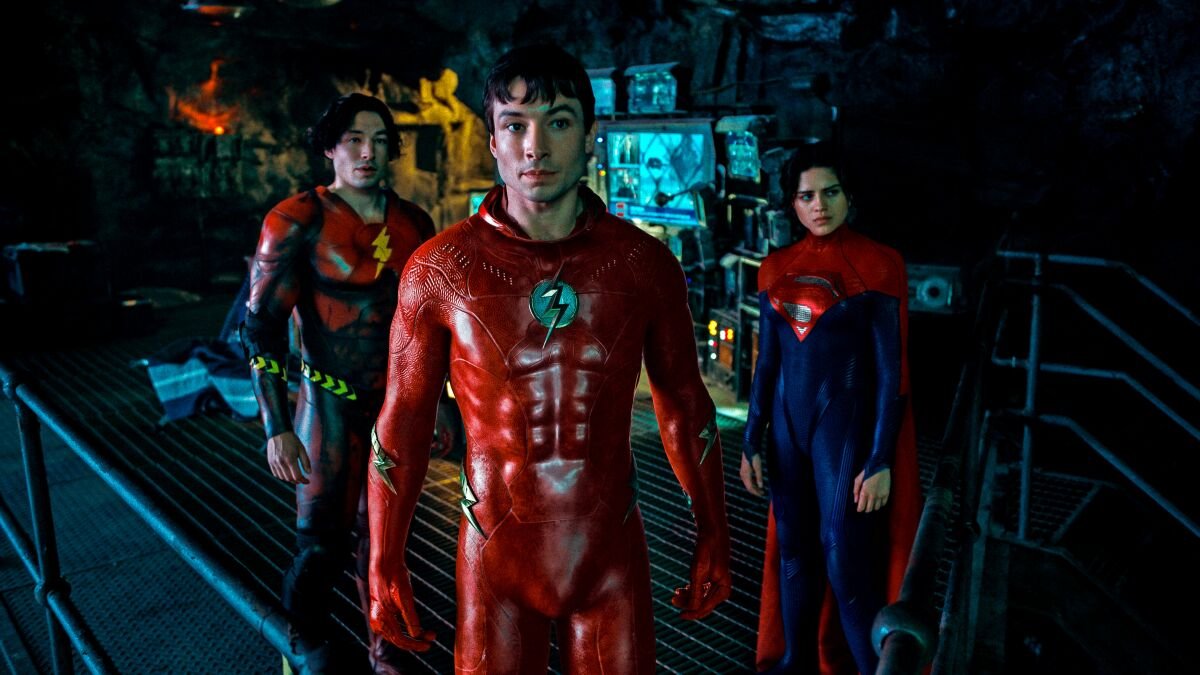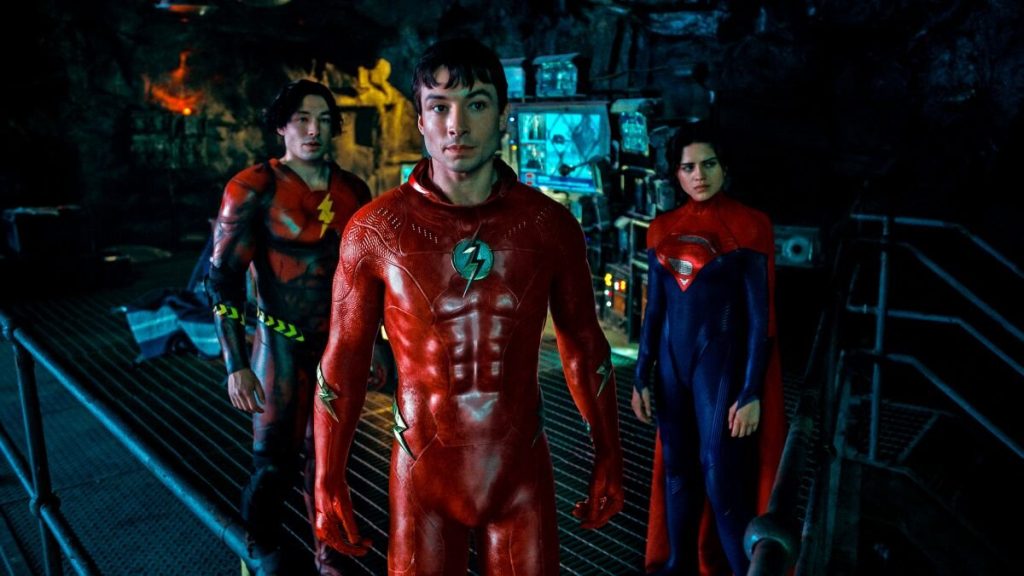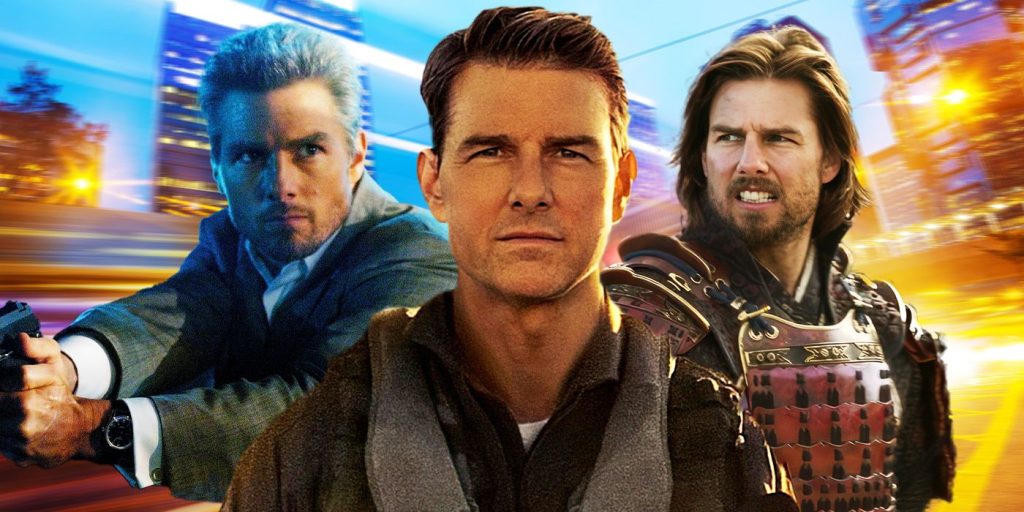
The Flash (2023) has taken the superhero genre to new heights, combining heart-pounding action with emotional storytelling. Directed by Andy Muschietti, the film features Ezra Miller reprising his role as Barry Allen, along with a much-anticipated cameo by Michael Keaton as Batman. In this review, we’ll dive deep into the highlights and missteps of The Flash, providing an in-depth look at the performances, visual effects, and the overarching narrative.
A New Beginning for The Flash
The Flash introduces a fresh chapter in the DCEU, focusing on Barry Allen’s journey through the multiverse. This film stands out by weaving together complex time travel and multiverse themes, elements that have captivated fans of superhero movies. Barry’s quest to save his mother from an untimely death sets the stage for an emotionally charged story, where the consequences of changing the past become central to the plot.
As Barry races through time, he inadvertently creates a new reality, one where he must face his alternate self and the altered consequences of his actions. This complex narrative structure keeps the audience engaged while introducing exciting new possibilities for the DCEU.
Emotional Core: Barry Allen and His Mother
At the heart of The Flash is the emotional core centered on Barry’s relationship with his mother. The emotional weight of the film is anchored by Barry’s deep-seated desire to change history and save his mother from the fate that haunts him. This adds an intimate layer to the superhero genre, turning what could have been another high-paced action movie into a personal and relatable journey for both the character and the audience.
Barry’s internal struggle between right and wrong becomes a powerful motivator throughout the film. His emotional investment in saving his mother not only drives his actions but also creates a poignant narrative thread that resonates with viewers, adding genuine emotional depth to the story.
Ezra Miller’s Performance
Ezra Miller’s performance as Barry Allen in The Flash is one of the film’s most praised aspects. Known for his quirky and unpredictable portrayal of the character, Miller brings a unique blend of humor, vulnerability, and action to the role. As Barry faces the consequences of his time-traveling decisions, Miller expertly balances the emotional weight of the character with his signature comedic timing.
Miller’s portrayal of Barry’s different versions in the multiverse is also a highlight. The actor deftly shifts between the heroic Barry we know and alternate versions of himself, showcasing a wide range of emotions. His performance is not only entertaining but also crucial in grounding the more fantastical elements of the film in a relatable reality.
The Comedic Timing and Range of Ezra Miller
What sets Ezra Miller apart in this role is his impeccable comedic timing. In scenes where Barry interacts with multiple versions of himself, Miller’s ability to inject humor into the situation adds a refreshing contrast to the more intense emotional moments. The way Miller navigates between humor and vulnerability showcases his depth as an actor, and it is this versatility that enhances the character’s appeal.

Michael Keaton’s Return as Batman
A major selling point for The Flash was the return of Michael Keaton as Batman. Fans of Keaton’s 1989 portrayal of the Dark Knight were thrilled to see him reprise his iconic role, and his return is one of the film’s most memorable elements. Keaton’s Batman brings a unique gravitas to the film, acting as both a mentor and a guide for Barry as he navigates the dangers of the multiverse.
Keaton’s performance not only serves as a nostalgic callback for long-time fans but also offers a deeper exploration of the Batman character. His portrayal of an older, more seasoned Batman adds an emotional layer to the film, showing how time and experience have shaped the once-feared vigilante.
How Keaton’s Batman Performance Elevates The Flash
Keaton’s return as Batman isn’t just about nostalgia. His presence is integral to the emotional and narrative development of The Flash. As Barry struggles with his inner turmoil and the consequences of his actions, Keaton’s Batman provides the wisdom and guidance Barry needs to make critical decisions. The interaction between these two characters, separated by time but united by purpose, forms the emotional backbone of the film, making Keaton’s performance a standout.

The Villain: General Zod
While The Flash shines in many areas, the villain, General Zod, played by Michael Shannon, falls somewhat flat. While Zod is undoubtedly a powerful force, his character feels underdeveloped in this film. In previous DCEU films, Zod was a menacing and compelling antagonist, but in The Flash, he seems more like a plot device to propel the multiverse storyline forward rather than a fully realized villain.
Zod’s motivations are clear — he wants to conquer Earth — but beyond that, his character doesn’t offer much depth. This lack of development makes him a less engaging threat compared to other villains in the DCEU. As the antagonist, Zod fails to leave a lasting impression, which is a noticeable flaw in the film’s overall narrative structure.
A One-Dimensional Villain
Zod’s role as a villain feels less impactful in The Flash due to his one-dimensional portrayal. While his actions certainly drive part of the plot, his lack of personal depth and complexity prevents him from being a truly compelling antagonist. This is especially noticeable when compared to the emotionally driven characters of Barry and Batman, which highlights how much more potential there was for Zod as a character.
As The Flash continues to receive attention from both critics and fans, the performance-driven elements shine through, with Ezra Miller and Michael Keaton delivering outstanding portrayals. However, the lackluster villain and inconsistent CGI hinder the full potential of the film. While it excels in emotional storytelling, the film’s visual effects and certain narrative choices leave room for improvement. For superhero fans, The Flash still offers plenty to enjoy, especially for those seeking a mix of nostalgia, humor, and heartfelt moments.
Stay tuned for the second part of this review, where we will dive into the visual effects, action sequences, and more detailed discussions on the multiverse and time travel aspects of The Flash.
The Visual Effects: CGI in The Flash
One of the more divisive aspects of The Flash is its visual effects, particularly the use of CGI. While superhero movies are often known for their cutting-edge effects, The Flash suffers from inconsistent visuals. While some sequences are breathtaking, others—especially in the final battle scenes—feel rushed and jarring, leaving viewers questioning the quality of the effects.
The film’s CGI moments, such as the time travel sequences and certain multiverse visuals, could have benefited from more polish. These effects, while ambitious, sometimes distract from the overall narrative. In a genre that thrives on visual spectacle, the uneven CGI in The Flash detracts from the otherwise engaging story.
Inconsistent CGI and Its Effect on the Story
The inconsistency in the CGI quality can be particularly jarring during the action-heavy final scenes. While some moments are visually stunning, others lack the necessary detail and smoothness, which disrupts the immersive experience. For a superhero film that relies heavily on visual effects, this inconsistency diminishes the emotional impact of some of the film’s most important moments.

The Action Sequences
Despite the CGI challenges, the action sequences in The Flash are undeniably exciting. From high-speed chases to intense multiverse battles, the action keeps viewers on the edge of their seats. The choreography and pacing are well-executed, making each fight and chase scene a thrilling experience for fans of superhero cinema.
The film does a great job of integrating the action with the emotional narrative, ensuring that the stakes feel high throughout. Barry Allen’s ability to manipulate time and speed adds a unique layer to the action, with thrilling visuals that are unlike anything we’ve seen in other superhero films.
Well-Thought-Out Action and Engagement
The action in The Flash isn’t just about spectacle; it’s integral to the story. The fights are well thought-out, showcasing Barry’s quick thinking and speed as he adapts to new realities. These sequences are not just fast-paced—they carry significant emotional weight, especially when Barry is forced to confront the consequences of his actions in the multiverse.
The Multiverse and Time Travel
At its core, The Flash is a time-travel movie, but with a superhero twist. The introduction of the multiverse adds a fascinating layer of complexity to the plot. Barry’s attempts to change the past, and the chaos that ensues, allow the film to explore themes of fate, destiny, and the consequences of tampering with time.
While the multiverse concept is exciting, it’s also a double-edged sword. For fans who are well-versed in comic book lore and superhero movies, the multiverse can be thrilling. However, for those who are not familiar with the intricacies of time travel, the plot can become convoluted, with some viewers feeling lost as they try to piece together the timeline.
Time Travel Confusion and Plot Gaps
The film’s time travel and multiverse elements, while bold, sometimes create confusion. The rules of time travel aren’t always clearly defined, leading to moments where the audience might struggle to keep up. This lack of clarity makes certain plot points feel rushed or unearned, leaving some gaps in the overall narrative.
Critical Reception and Fan-Service
Despite its flaws, The Flash has generally received a positive reception from both critics and fans, particularly for its emotional storytelling and the performances of its lead actors. Fans of the DCEU and superhero genre will find much to enjoy, especially with the return of Michael Keaton as Batman. The film balances fan-service with genuine character development, providing a satisfying experience for long-time comic book fans.
However, there are criticisms as well, particularly in regard to the film’s reliance on visual effects and its somewhat lackluster villain. While The Flash is a thrilling ride for many, it’s clear that it doesn’t quite reach the heights of other superhero epics like The Dark Knight or Avengers: Endgame.
The Balance of Emotional Storytelling and Fan-Service
The key to The Flash‘s success lies in its balance between emotional storytelling and fan-service. While there are plenty of nostalgic nods to the DCEU and comic book fans, the film doesn’t lose sight of its emotional core. The relationship between Barry and his mother, along with the mentorship from Keaton’s Batman, provides a rich, character-driven narrative that elevates the film beyond just another superhero spectacle.

Conclusion: The Flash’s Place in the DCEU
In the grand scheme of the DCEU, The Flash holds a unique position. It’s a film that manages to offer both emotional depth and exhilarating action, but with some noticeable flaws that prevent it from becoming a true standout in the genre. The emotional stakes are high, and the performances are top-notch, but the uneven visual effects and underdeveloped villain hold it back.
Is The Flash Worth Watching?
Despite its shortcomings, The Flash remains an enjoyable film for fans of the superhero genre. The nostalgia of Michael Keaton’s Batman, combined with Ezra Miller’s engaging performance as Barry Allen, makes it a worthwhile watch for those looking for a fun, emotional superhero movie. While it doesn’t fully capitalize on its potential, The Flash still manages to deliver an entertaining and emotionally resonant experience.
For more superhero movie reviews and in-depth analysis of the DCEU, check out our DC Films Review and Ezra Miller: The Flash Performance Breakdown.



